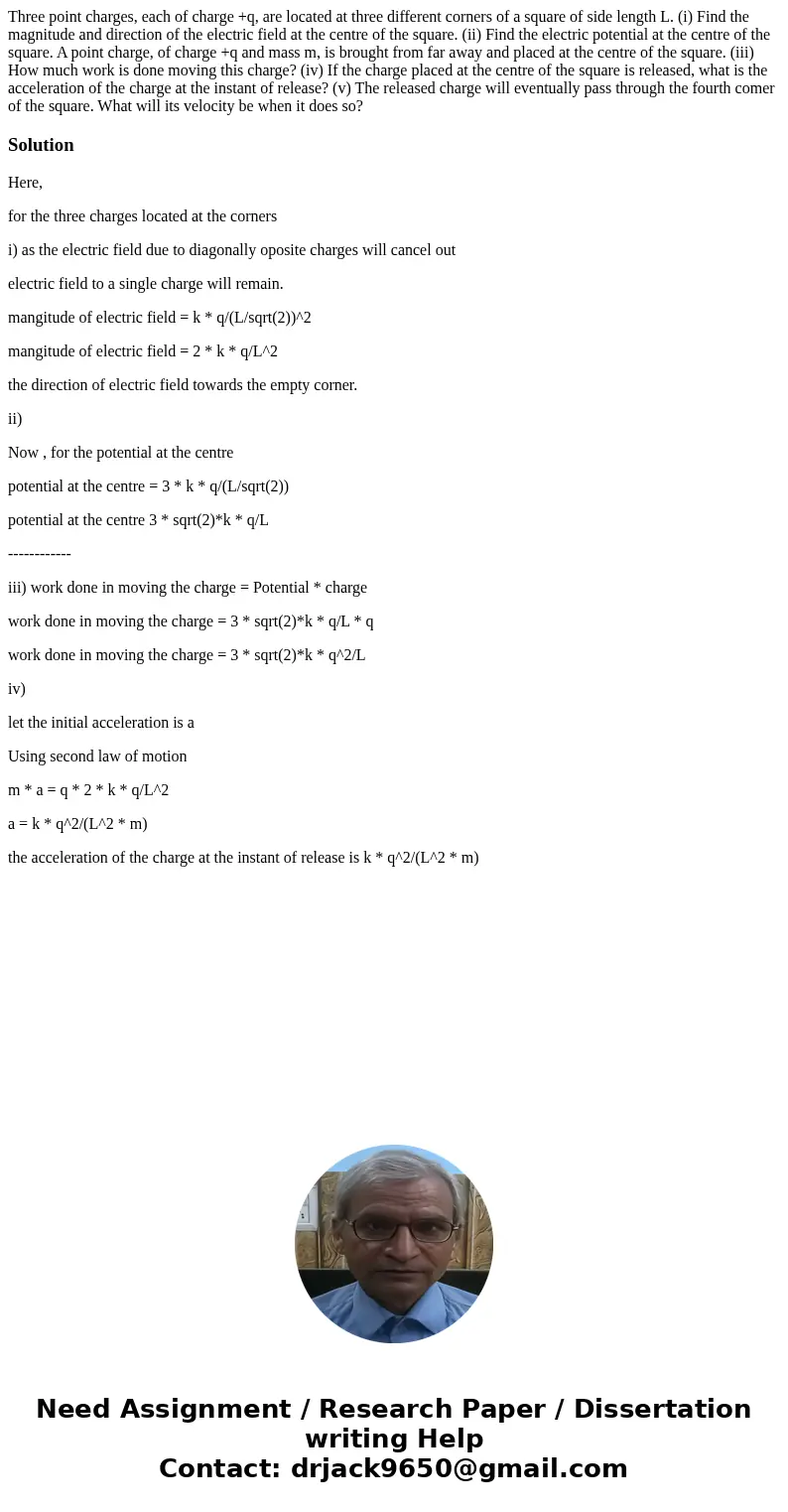Three point charges each of charge q are located at three di
Solution
Here,
for the three charges located at the corners
i) as the electric field due to diagonally oposite charges will cancel out
electric field to a single charge will remain.
mangitude of electric field = k * q/(L/sqrt(2))^2
mangitude of electric field = 2 * k * q/L^2
the direction of electric field towards the empty corner.
ii)
Now , for the potential at the centre
potential at the centre = 3 * k * q/(L/sqrt(2))
potential at the centre 3 * sqrt(2)*k * q/L
------------
iii) work done in moving the charge = Potential * charge
work done in moving the charge = 3 * sqrt(2)*k * q/L * q
work done in moving the charge = 3 * sqrt(2)*k * q^2/L
iv)
let the initial acceleration is a
Using second law of motion
m * a = q * 2 * k * q/L^2
a = k * q^2/(L^2 * m)
the acceleration of the charge at the instant of release is k * q^2/(L^2 * m)

 Homework Sourse
Homework Sourse